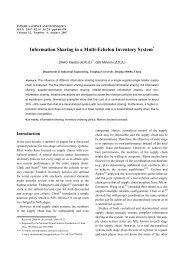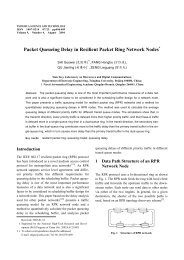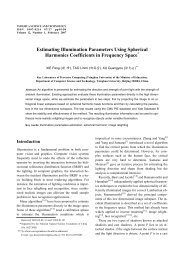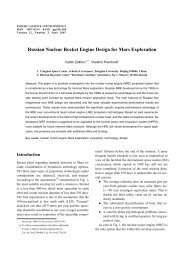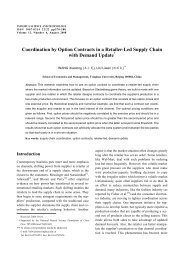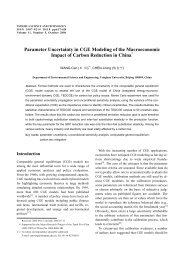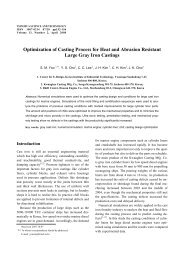Sample Paper_Submission.pdf
Sample Paper_Submission.pdf
Sample Paper_Submission.pdf
You also want an ePaper? Increase the reach of your titles
YUMPU automatically turns print PDFs into web optimized ePapers that Google loves.
209<br />
210<br />
211<br />
212<br />
213<br />
214<br />
215<br />
216<br />
217<br />
218<br />
219<br />
220<br />
221<br />
222<br />
223<br />
224<br />
225<br />
226<br />
227<br />
228<br />
229<br />
230<br />
231<br />
232<br />
233<br />
(3)Submerged aquatic plants<br />
① Genus Myriophyllum<br />
Fig. 6 Allelopathic abdane diterpenes from Potamogeton pectinatus [81]<br />
Gross et al. reported that the acetone extract of Myriophyllum spicatum had remarkable inhibition on<br />
many globular and fibrous cyanobacteria but was ineffective on many green algae and diatoms. The extract<br />
analysis showed that hydrolytic tannins, ellagic acid (EA), and many polyphenols occupied the great<br />
content, in which eugeniin as the main allelochemical was 1.5% of the dry weight of the extract[82].<br />
Nakai et al. studied the leachate of Myriophyllum spicatum with similar results, especially discovered<br />
the water-soluble inhibitory allelochemicals in the secretions, of which the molecular weights were less<br />
than 1000 Dalton. Based on the analysis of HPLC and APCI-MS, pyrogallic acid (PA), gallic acid (GA),<br />
(+)-catechin (CATECH) were identified[41]. At the earilier year, Planas et al. also pointed out the PA, GA,<br />
and EA existed but CATECH was firstly discovered by Nakai in Myriophyllum spicatum[83]. Subsequently,<br />
Nakai et al. investigated the left organic fraction obtained as above and nonanoic acid, tetradecanoic acid,<br />
palmitic acid, octadecanoic acid and octadecenoic acid, a variety of fatty-acid-like allelochemicals were<br />
identified in it, of which nonanoic acid, cis-6-octadecenoic, and cis-9-octadecenoic acids had the strongest<br />
inhibitory activities[42]. Majority of the phenolic and fatty acids discovered above are by far the strongest<br />
allelochemicals, of which EC50s were seen in Table 4.<br />
Gross reported the plants of genus Myriophyllum, Myriophyllum alterniflorum and Myriophyllum<br />
heterophyllum could excrete polyphenol-like alleochemicals like Myriophyllum verticillatum,<br />
Myriophyllum brasiliense, and Myriophyllum spicatum to inhibit the growth of green algae and<br />
cyanobacteria[84], which might be due to the close genetic relationship among the plant species in the<br />
same genus (Gross et al, unpublished). In addition to polyphenols, α-asarone, phenylpropane<br />
glycoside-like allolochemicals were identified from Myriophyllum verticillatum[85, 86].<br />
Table 4 EC 50 values of allelochemicals from Myriophyllum spicatum on Microcystis aeruginosa<br />
Allelochemicals EC 50(mg/L) References<br />
gallic acid 1.0<br />
pyrogallic acid 0.65<br />
ellagic acid 5.1<br />
(+)-catechin 5.5<br />
nonanoic acid 0.5±0.3<br />
cis-9-octadecenoic acids 1.6±0.4<br />
cis-6-octadecenoic acids 3.3±0.4<br />
- 12 -<br />
[41]<br />
[42]



